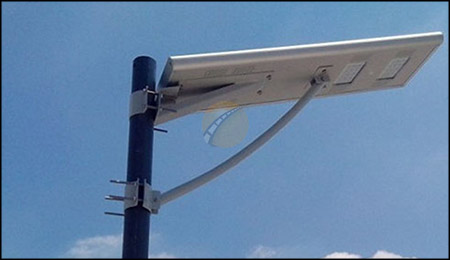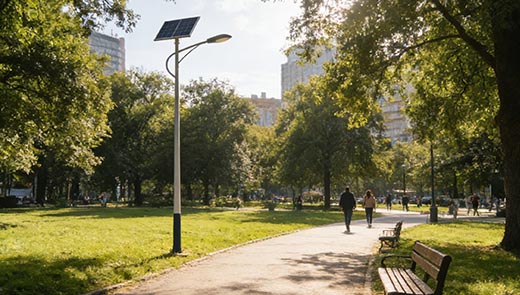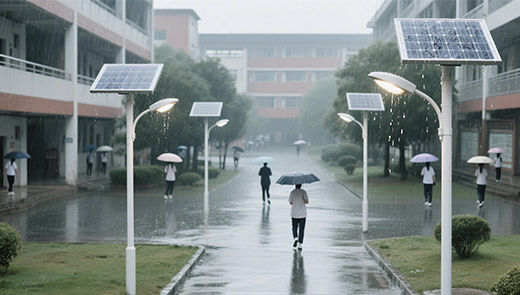How to Fix a PIR Sensor Solar Light: An Ultimate Repair Guide
Even though PIR sensor solar street lights are designed to be durable, sudden failures are still a common problem during long term outdoor use: sometimes the light comes on only when a person walks up to it, sometimes it flickers a lot when no one is around, or even doesn't come on at all. Most users will directly replace the lamp with a new one when they encounter such problems, but in fact, 80% of the failures can be solved by simple repairs - from cleaning dust to replacing batteries, the cost may be only 1/10 of a new lamp.
The core value of this article is to disassemble the working logic of PIR sensor solar street lights in layman's terms, help you locate the specific cause of “sensor failure”, and provide actionable repair steps. Whether you are a regular user or a property maintenance person, this guide will help you save money on repairs and extend the life of your fixtures.
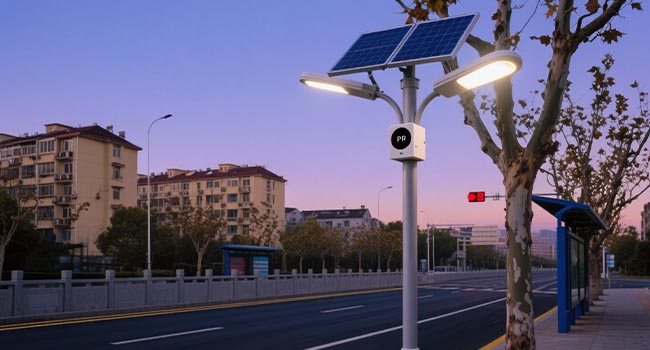
Introduction to PIR Sensor Solar Street Lights
PIR Sensor Solar Street Lights is an upgraded form of traditional outdoor lighting, which combines solar-powered technology with passive infrared (PIR) sensing technology, realizing the "no wiring, automatic start-stop, energy saving and power saving " Three core advantages. These lamps do not need to be connected to the power grid, during the day through the solar panel to collect sunlight and convert it into electricity stored in the battery, at night it relies on the PIR sensor to detect the infrared movement signals of the surrounding environment - when people, animals and other heat-generating body passes by, the sensor will immediately trigger the LED lamps to light up; when the heat source is out of the detection range, the lights will be automatically turned off according to a preset time. When the heat source leaves the detection range, the light will automatically turn off at a preset time.
From the point of view of application, they are widely used in courtyards, balconies, neighborhoods, green belts and other areas, not only to meet the basic lighting needs, but also through the “people come to light up, people go out of the light” characteristics to enhance security. However, the “sensitivity” of PIR sensors also makes them more susceptible to environmental influences than ordinary solar street lights: temperature, dust, battery status, and other factors can cause sensing failure.
Understanding How PIR Sensor Solar Street Lights Work
To fix a luminaire, you have to understand how it's built. The PIR Sensor Solar Street Light consists of four core components, each of which can malfunction and cause the luminaire to fail. The solar panel captures sunlight and converts it into electricity, which is stored in a battery. If the solar panel is blocked or damaged, the entire luminaire will fail due to lack of power. The battery stores the energy generated by the solar panel for use by the LEDs and the PIR sensor at night. When the battery ages or loses power, the sensor may become unresponsive due to lack of power.
LEDs are low-power, long-life light sources that are switched on and off by a PIR sensor. the LED itself rarely breaks down, but a lack of power can prevent it from lighting up. the PIR sensor senses motion by detecting infrared radiation, such as heat from the human body, and controls the switching on and off of the LED. it is “passive” in that it detects movement, such as heat emitted by the human body. It is “passive” - it does not actively emit energy, but only detects sudden changes in the infrared spectrum in the environment.
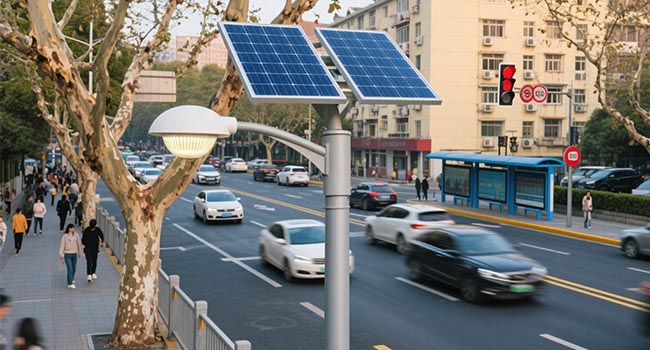
Why Do Solar Street Lights with PIR Sensors Stop Working?
Environmental Factors and Weather Damage
Outdoor light fixtures are susceptible to a variety of problems when exposed to extreme weather for long periods of time. Alternating high and low temperatures can cause calibration shifts in PIR sensors because they rely on temperature differences to detect motion, and fluctuations in ambient temperature can interfere with judgment. Rain and moisture seeping inside can corrode wires or sensor circuitry. UV exposure accelerates the deterioration of plastic parts, causing the sensor housing to crack. Dust and leaves accumulate on the sensor surface, which can block IR signal reception. These types of problems will be more common with fixtures in coastal areas or areas where heavy rain or snowstorms are common.
Battery and Power Supply Issues
PIR sensors are sensitive to the stability of the power supply and a variety of conditions can directly cause them to fail. Aging batteries, 2-3 year old batteries will lose their power reserve and may not be able to supply enough voltage to the sensor, which can manifest itself in shorter sensing distances or no response at all. Inadequate charging is also a common problem. Shaded solar panels, dirt on the surface, or malfunctioning charge controllers can cause the battery to remain undercharged for long periods of time. In addition, faulty wires can also affect the power supply. Loose wires or oxidized connectors between the solar panel and the battery, or between the battery and the sensor, can cause the power supply to be intermittent, and the sensors may work or not work at all.
Sensor Calibration and Configuration Problems
Modern PIR sensors have adjustable parameters such as sensitivity, detection range, time delay, etc. Improper settings can cause a series of problems. If the sensitivity is too high, the light may be triggered by the slightest shaking of leaves or the passing of small insects, which will lead to frequent false lighting and waste of power. Too low sensitivity will be the opposite situation, even if someone passes by, the sensor does not respond, losing the lighting and security role.
Unreasonable detection range settings can also be a problem, such as detection angle is too narrow, will lead to the “blind zone”, that is, someone passes by but does not light up. In addition, failure to recalibrate in time will also affect the use of the surrounding new trees, buildings may block the detection area, the need to readjust the parameters.
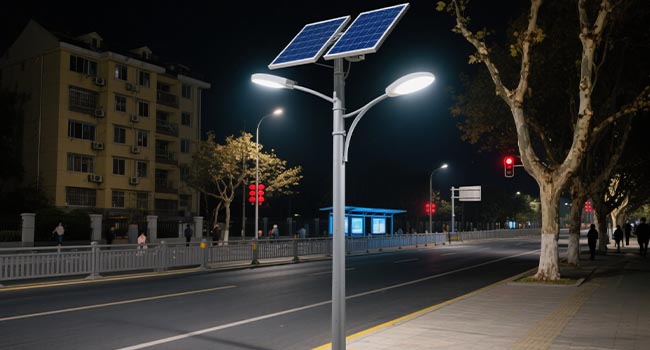
What Are Common Problems with PIR Sensors in Solar Street Lights?
Reduced Detection Range and Dead Zones
This is manifested by the fact that the lights used to be triggered from 5-8 meters away, but now they have to go within 1-2 meters before they light up; or they can only sense the lights in Or it can only sense the front of the light, but not the side or diagonal back of the light. Common causes include insufficient battery power, weak power supply will lead to a decline in sensor sensitivity; sensor aging, wear and tear of the internal components, the ability to capture infrared signals will be weakened; there may also be sensors partially blocked by foreign objects, such as the installation of the location of the new growth of tree branches blocked.
No Sensing At All
This fault manifests itself at night in a dark environment, with people or animals moving back and forth within the detection range, and the light never comes on; however, manually pressing the “Test Button” on the luminaire (if present) may illuminate, which can rule out a fault in the LED light itself. Common triggers include complete damage to the PIR sensor, with the internal circuitry burned out; a broken or poor contact between the sensor and battery wires; and a complete battery deficit, which does not provide the sensor with starting voltage.
Lights Stay on Constantly Or Come Back On Immediately After Going Out
This condition manifests itself as a situation where, once triggered to come on, it continues to stay on for hours, far exceeding the set “delayed shutdown time”; or it goes off and then comes back on automatically 1-2 seconds later, and the cycle repeats itself. Common causes include the sensor being exposed to a constant heat source, such as a nearby air conditioning unit or street light; an internal short circuit in the sensor that causes it to keep detecting motion; or the sensitivity knob may be stuck and unable to return to its normal position.
Step-By-Step Guide On How to Fix A PIR Sensor Solar Street Light
Preliminary Checks Before Repair
Do these basic checks before disassembling the light, 80% of minor problems can be solved here. To clean the solar panel, wipe the surface with a soft cloth dipped in water to make sure it is free of dust and leaves. When checking the battery, open the battery compartment and observe whether there is any leakage or bulging, if so, you need to replace it directly.
Clean the PIR sensor, the sensor is usually a small round window, use a cotton swab dipped in a dry cloth to wipe away dust, cobwebs, foreign objects will block the infrared signal. Also check the wire connections, see if the wires from the solar panel to the battery and the battery to the sensor are loose, and whether the connectors are oxidized, if oxidized, you can apply a small amount of petroleum jelly to prevent rust.
How to Test the PIR Sensor Functionality
If there is still a problem after the initial check and you need to confirm that the sensor is working correctly, there are two simple ways to do this. The human body sensor test is a relatively simple one, first of all, to ensure that the lamps and lanterns are in the “night mode”, you can cover the solar panel to simulate the dark night; and then stand in the detection range of the sensor, this range is usually in the 3-8 meters, specific reference lamps and lanterns instruction manual, move slowly; if the light is on, it means that the sensor is basically normal, if there is no reaction, you need to carry out the next step of the test. If the light is on, the sensor is basically normal, if there is no reaction at all, you need to carry out the next test.
Multimeter test is relatively suitable for people who know a little about the circuit, first disconnect the sensor from the battery; the multimeter will be adjusted to the “DC voltage file”, the red pen connected to the sensor positive, black pen connected to the negative; hand close to the sensor, if the voltage fluctuates significantly, usually between 0.5-3V, indicating that the sensor is normal, if there is no fluctuation, may be damaged. If there is no fluctuation, the sensor may be damaged.
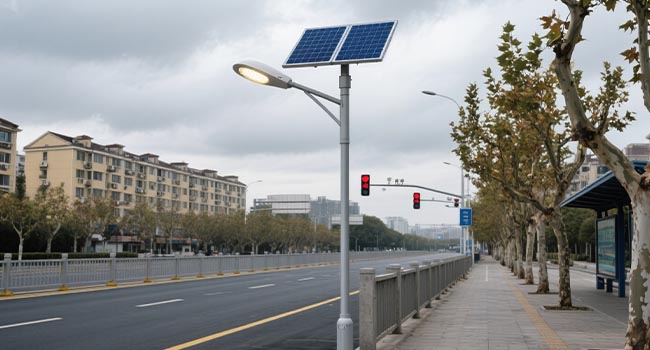
Troubleshooting Power Supply Issues
Sensors rely on a stable power supply, if the sensor is found to be unresponsive, prioritize troubleshooting power supply. Replace the battery, if the battery has been used for more than 2 years, or after charging, it still can't support the lamps and lanterns to work for more than 3 hours, directly replace the battery of the same type, pay attention to the voltage to match, common 3.7V, 6V, 12V.
Repair solar panels, use a multimeter to test the output voltage of solar panels under sunlight, under normal circumstances, it should be about 1.2 times of the labeled voltage, for example, 12V solar panels should be output 14-16 V. If the voltage is too low, check the surface to see if there are cracks, and if there are cracks, you need to change the panels; you also need to check the charging controller, and the failure of the controller will result in the failure of the battery charging, and you need to replace the battery according to the model number. Repair the wires, if the wires are broken, use insulating tape to wrap and connect them; if the connectors are badly oxidized, cut off the oxidized part, re-strip the wires and connect them and then seal them with heat-shrink tubing to prevent water from entering.
Calibrate the PIR sensor
If the sensor can work but behaves “abnormally”, such as frequent mis-lighting and short sensing distance, it may be improperly set up, you can calibrate it according to the following steps, the operation of different brands varies slightly, the specific instructions shall prevail.
Adjust the sensitivity, the lamps usually have a “sensitivity knob”, labeled “SENS”, clockwise higher to detect smaller movements, such as pets, counterclockwise lower to reduce false triggers.
Adjust the detection range, some of the fixtures can be adjusted by the knob, labeled “RANGE”, can adjust the detection angle, usually at 120 ° -180 °, you can also cover the edge of the sensor with opaque tape, to narrow the range, which is suitable for avoiding false triggering of roadside vehicles and pedestrians.
Adjust the time delay setting, the “time delay knob” is labeled “TIME”, it controls how long the light stays on after sensing, usually 10 seconds - 5 minutes. If the batteries are draining fast, the delay can be shortened, e.g. from 3 minutes to 1 minute.
Replacing The PIR Sensor
If the above steps confirm that the sensor is damaged and needs to be replaced, proceed as follows. First, purchase a compatible sensor, check the old sensor model number, usually printed on the surface, such as “HC-SR501”, or you can buy a special sensor according to the brand model of the fixture, pay attention to the voltage and interface need to match. Then disassemble the fixture, use a screwdriver to open the fixture shell, record the wiring position of the sensor, you can also take a picture to archive, to avoid reverse connection.
Next, replace the sensor, if the sensor is connected to the plug, directly unplugged; if it is welded, remove the old sensor with a soldering iron, weld the new sensor, pay attention to the positive and negative poles do not reverse. Finally test and recovery, reconnect the battery, test the sensor according to the method in 4.2, confirm the normal installation back to the shell, pay attention to sealing and waterproofing, can be coated with a small amount of silica gel at the joints.
Mastering these maintenance methods, most of the failures of PIR sensor solar street light can be solved. Usually regularly clean up the solar panel and sensor, check the battery status, and then adjust the sensor sensitivity or detection range according to the use of the situation, you can effectively avoid the “sensor failure” “frequent flicker” and other problems, significantly extend the life of the lamp. Doing these, solar street light can be long and stable outdoor light, both save money and worry.

